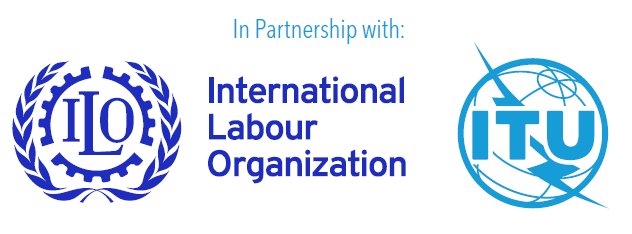1.1 Accessibility of job portals in the United Nations system
The United Nations is committed to fostering diversity and inclusion and is taking practical steps to create a work environment that is open to, inclusive of and accessible to persons with disabilities and staff members with dependents with disabilities. Ultimately, disability inclusion is the responsibility of all managers and staff within the United Nations system.
Article 27 of the CRPD encourages State Parties to build legislation and regulations to safeguard and promote the realization of the right to work of persons with disabilities, by prohibiting employers from discriminating on the basis of disability, including in recruitment and hiring.
The main pillars of the United Nation’s commitment to disability inclusion are:
| 1 | the CRPD | |
| 2 | the UN Disability Inclusion Strategy (UNDIS) | |
| 3 | The eight guiding principles of the CRPD, which underpin the Convention and each of its articles: |
| 1 | Respect for inherent dignity, individual autonomy including the freedom to make one’s own choices, and independence of persons | |
| 2 | Non-discrimination | |
| 3 | Full and effective participation and inclusion in society | |
| 4 | Respect for difference and acceptance of persons with disabilities as part of human diversity and humanity | |
| 5 | Equality of opportunity | |
| 6 | Accessibility | |
| 7 | Equality between men and women | |
| 8 | Respect for the evolving capacities of children with disabilities and respect for the right of children with disabilities to preserve their identities. |
Guiding principles 2 to 7 are relevant to online application processes. UNDIS is a comprehensive strategy that underpins all disability inclusion-related policies and actions by United Nations entities. It includes an accountability framework which mandates United Nations entities to define and implement accessibility policies and strategies and ensure that websites and online job application platforms meet accessibility requirements. The framework includes a set of indicators to monitor how well each entity has met those requirements. The following are of particular relevance:
Indicator 6: Accessibility (part of the core area of “Inclusiveness”), which measures whether an organization:
o approaches the requirements (a baseline assessment on accessibility has been completed);
o meets the requirements (an accessibility policy or strategy is in place and has been implemented);
o exceeds the requirement (an accessibility policy or strategy is in place and has been implemented; and a review or assessment of the accessibility policy or strategy is undertaken at least every five years).
Indicator 13: Employment (part of the core area of “Organizational culture”), which measures whether an organization:
o approaches the requirements (has an employment policy or strategy and other human resources-related policies or strategies that include provisions to attract, recruit, retain and promote the career development of employees with disabilities);
o meets the requirements (has an employment policy or strategy and other human resources-related policies or strategies that include provisions to attract, recruit, retain and promote the career development of employees with disabilities; and employees with disabilities report satisfaction and well-being at a level similar to the general staff body);
o exceeds the requirement (has an employment policy or strategy and other human resources-related policies or strategies that include provisions to attract, recruit, retain and promote the career development of employees with disabilities; employees with disabilities report satisfaction and well-being at a level similar to the general staff body; and the number of persons with disabilities entering the organization through targeted or mainstream recruitment practices has increased).
United Nations entities can use this guide to help define and implement such policies and strategies. For more information about UNDIS, see Annex 1.
| Research by the International Labour Organization (ILO) indicates that a diverse workforce that includes employees with disabilities may contribute to increased productivity, creativity, job retention and workplace morale, as many persons with disabilities have unique talents and problem-solving and adaptation skills which can help drive innovation, build strong business ideas and strategies and develop competitive products and services. Despite being the world’s largest minority group, persons with disabilities and their families constitute a large, often-overlooked demographic with considerable purchasing power and one of the largest voting blocs in many countries. These are solid grounds on which to build a business case for disability inclusion and workplace accessibility in United Nationsagencies.
Source: ILO, “Disability in the workplace: Employers’ organizations and business networks”, Working Paper No 6, 2011. |
